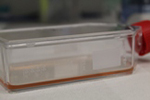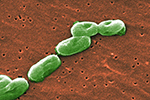APAF Newsletter Vol. 1 No. 2
Welcome to APAF's Spring 2011 newsletter.
We received tremendous interest following our inaugural newsletter and look forward to providing you with the latest proteomic developments with this issue. We present 3 technologies for your interest.
Many researchers have contacted us regarding proteome analysis of conditioned media of cultured cells. This work is technically challenging given the low concentration of secreted proteins in a complex biological background of culture media. Our mass spectrometery and protein chemistry teams have joined forces to optimise sample preparations conditions to enable quantitative comparisons.
Analysis of secreted proteins in conditioned media

APAF is constantly looking to develop improved analysis systems that will assist scientists to further their research. We have been asked on many occassions to determine the relative quantity of secreted proteins in conditioned media. This analysis is challenging because cell culture media has a high salt concetration and often contain cell culture nutrients which may interfere with protein analysis. Also, the concentration of secreted proteins can often be low and the media may be contaminated with lysate from dead cells. Read more
Proteogenomics corrects genome annotations

Genome sequencing errors can hinder comparative genomics. Advances in protein mass spectrometry coupled with bioinformatics approaches allow proteomics is assist in correcting errors from genome sequencing projects. In a recent collaboration with Prof Ian Paulsen of Macquarie University, APAF has shown examples of where mass spectrometry analysis of proteins in the bacterium Bukholderia cepacia (b.cepacia) could be used to correct errors in the genome annotation obtained from genome sequencing. Read more
Chemical Proteomics for drug discovery

Characterising the specificity of novel lead compounds and drug candidates is a necessary component of drug discovery. Determining off-target effects is essential to limit drug toxicity.
Chemical proteomics utilises synthetic small molecule probes to selectively capture and enrich particular classes of proteins from complex biological samples, enabling their characterisation by proteomic techniques. Chemical probes are typically engineered to contain various molecular elements including the following (see chemical diagram): Read More
